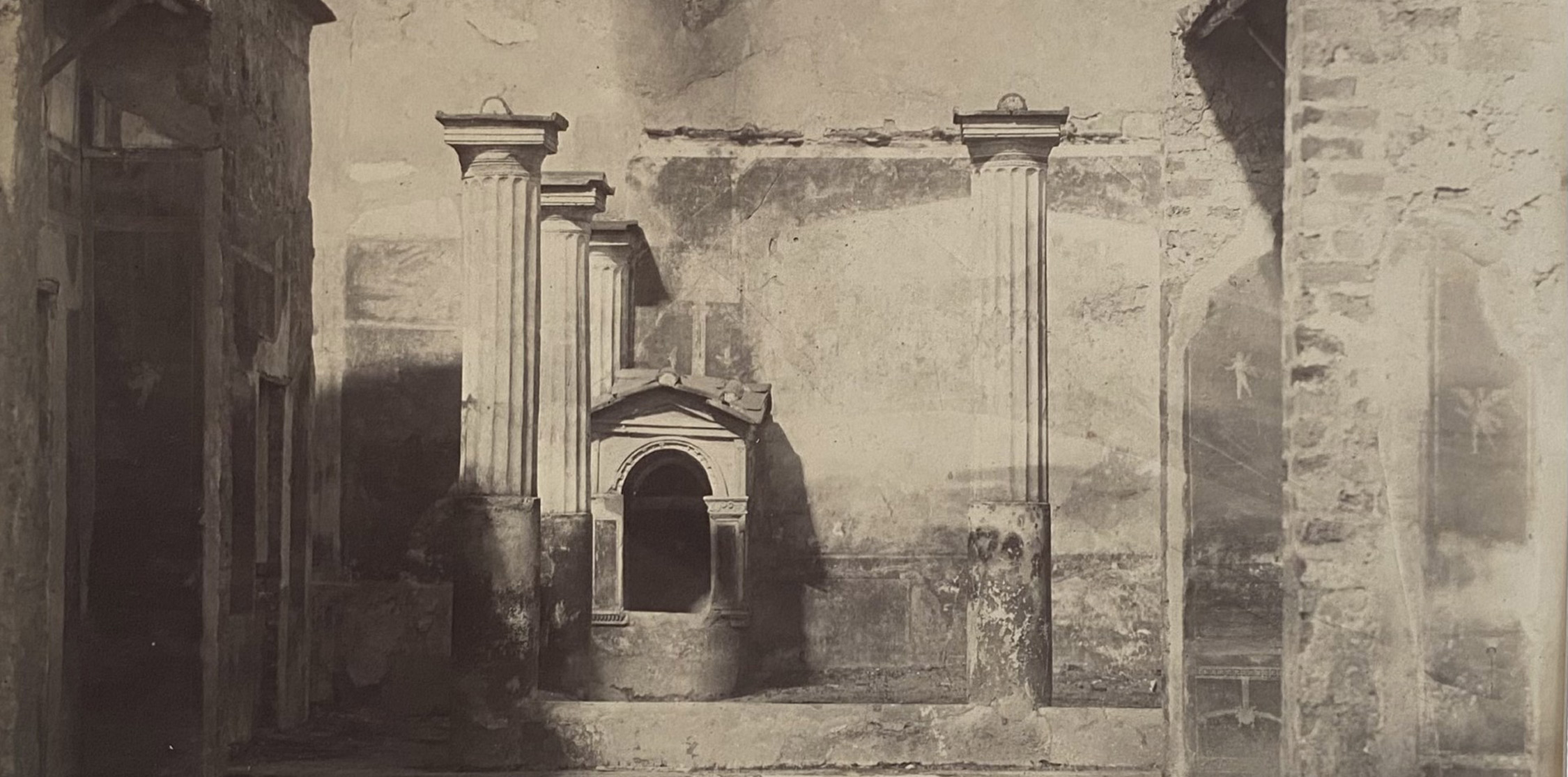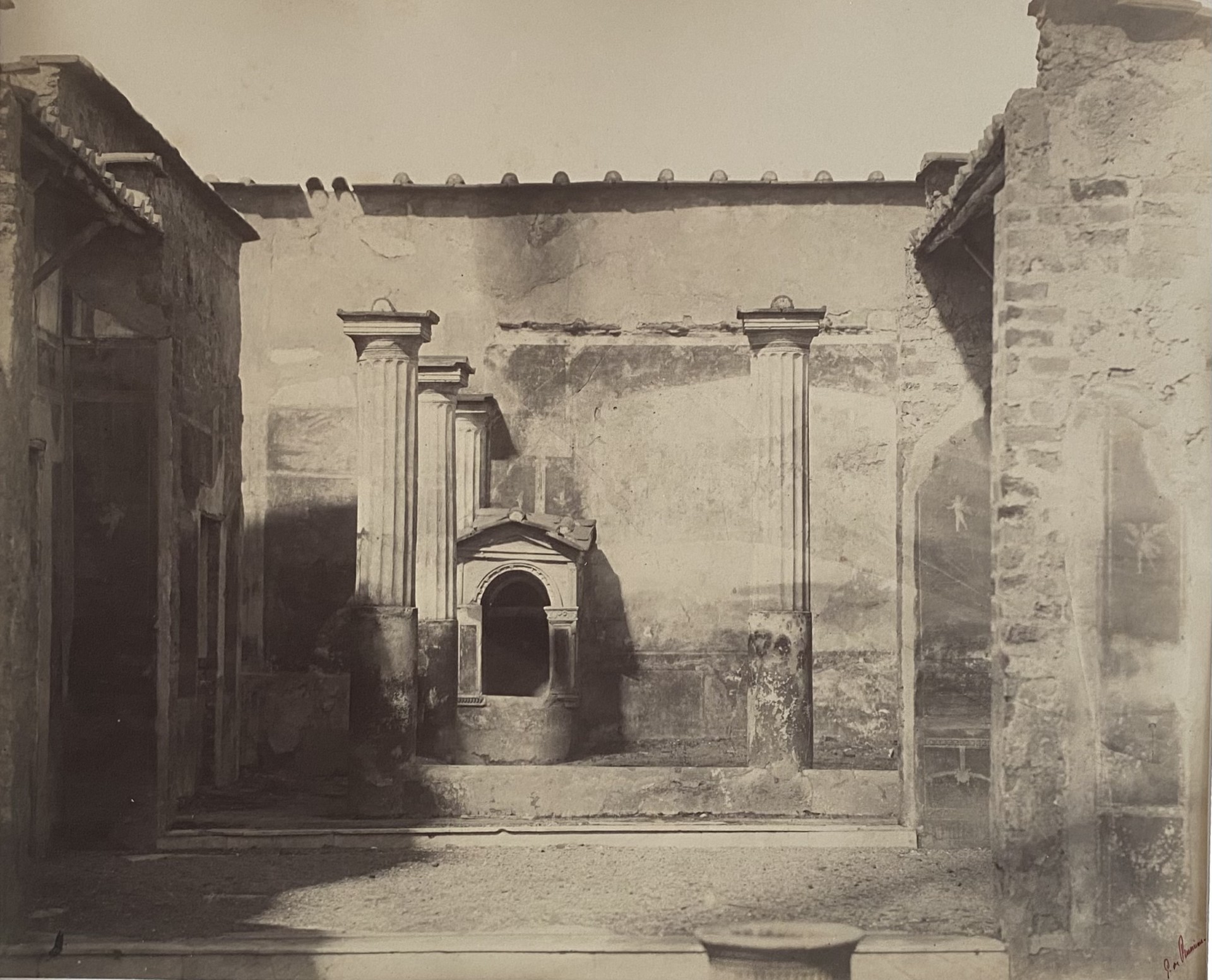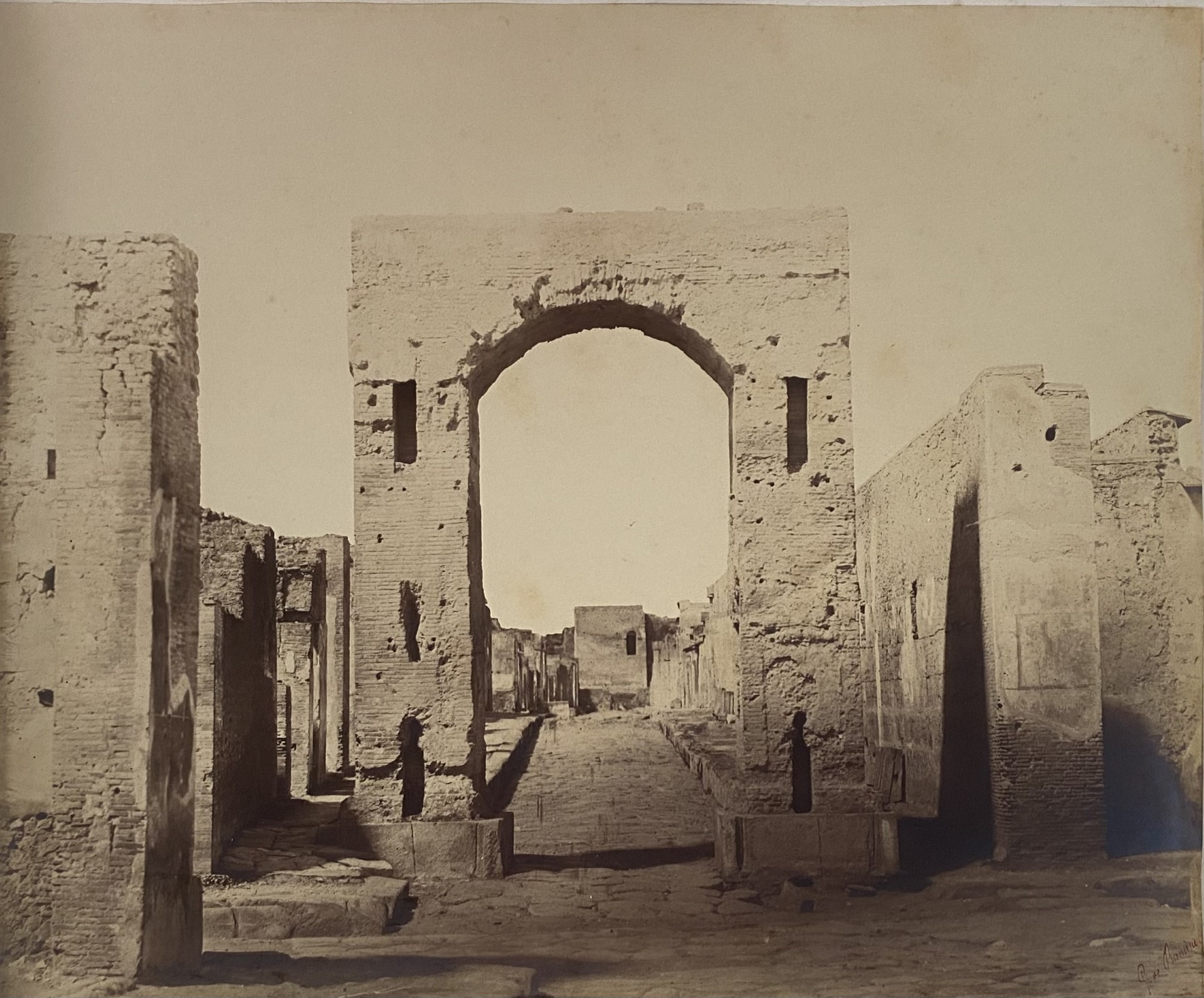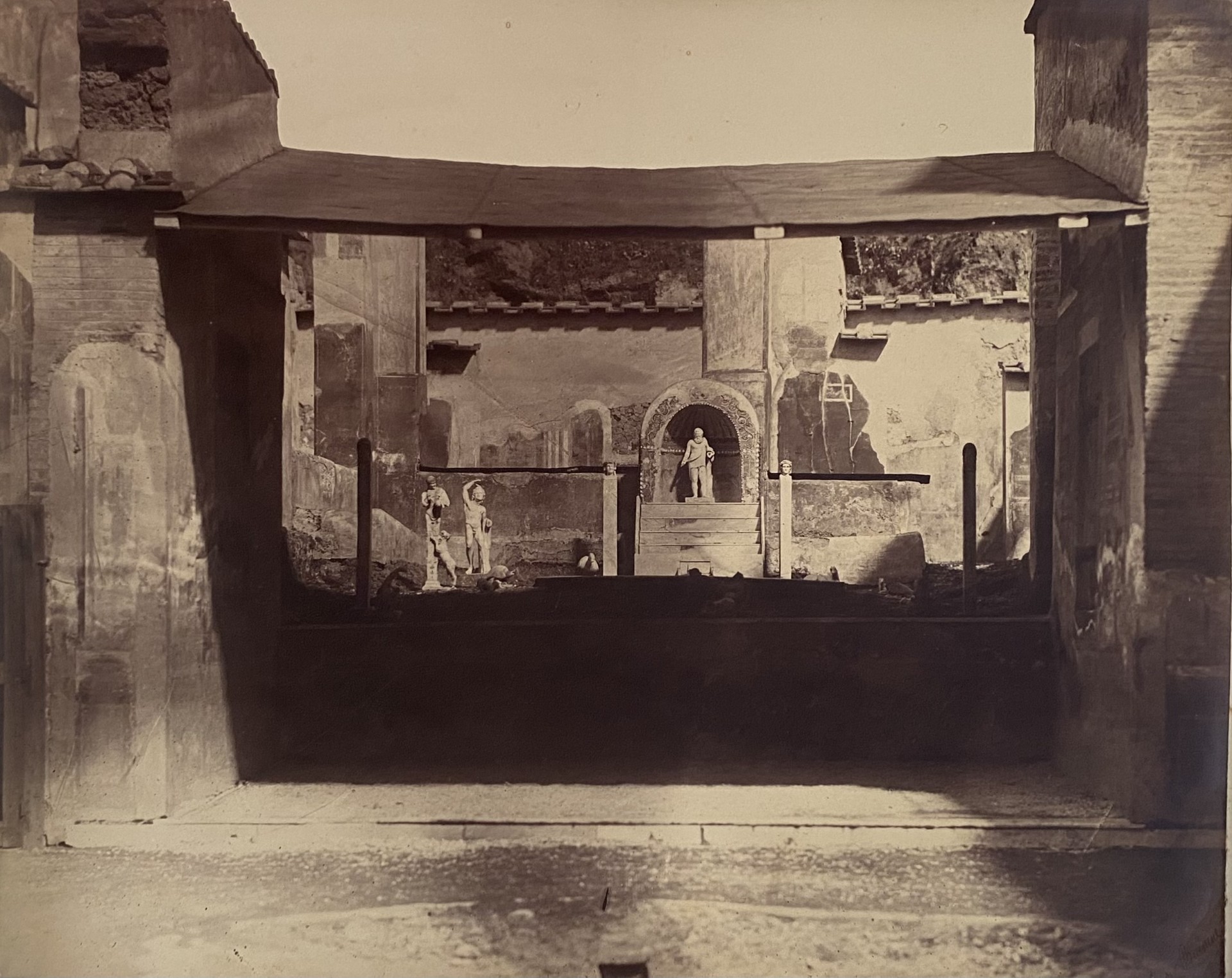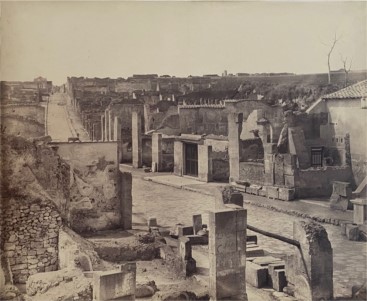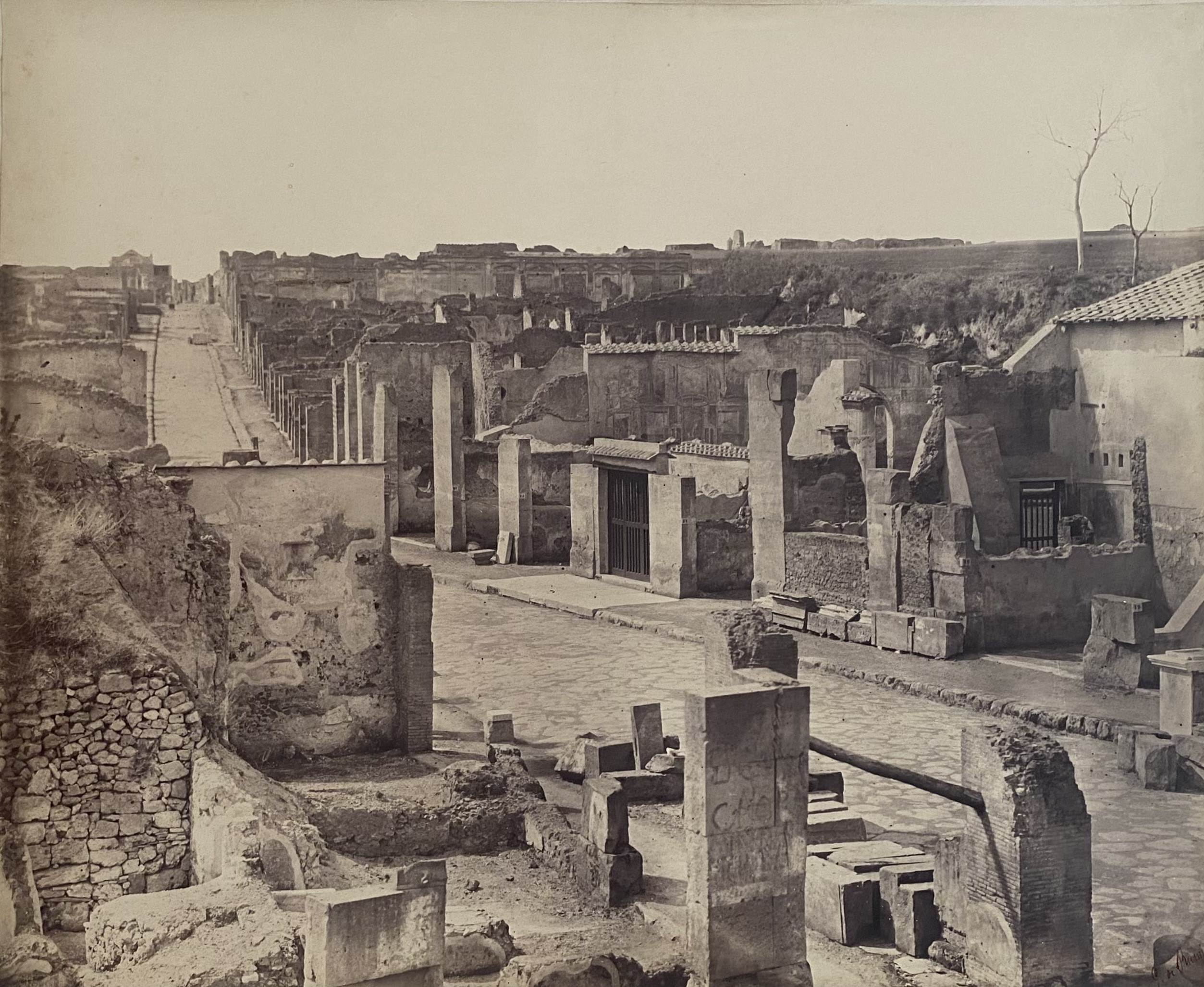The exhibition presents for the first time to the public a series of views of Pompeii, shot by the Russian photographer Gabriel Ivanovič de Rumine (1828–91), from the photographic collection of the MANN. The pictures are all accurately dated between March and April 1859.
De Rumine was an aristocrat and officer of the Russian Army who, from 1856, undertook the study of photography in Paris and London. After achieving international recognition – he was a member of the Société Française de Photographie and the Royal Photographic Society – in 1858 he embarked as a photographer with the entourage of the Grand Duke Konstantin of Russia (brother of Tsar Alexander II) for a long cruise in the Mediterranean sea that included, among other destinations, Palermo, Naples, Athens, and Jerusalem.
On that occasion, de Rumine visited Pompeii and, thanks to a special permit granted by King Ferdinand II to the Grand Duke, he took a series of views of the city, including the Stabian Baths, which had recently been excavated: to-date, it is the earliest known photographic reportage of Pompeii with pictures of these dimensions – each albumen print measures around 30 x 40 cm.
The MANN holds twenty-eight of these rare albumen prints, which had long been forgotten in the archives with neither dating nor attribution. A large selection of them is on display together with other vintage photographs and archive documents which attest to de Rumine’s visit and activity in the excavations, and which allow us to date the photos with accuracy.
The exhibition has been curated by Andrea Milanese, Ruggiero Ferrajoli and Domenico Pino and, together with the exhibition Luigi Bazzani and the Pompeian house, it dialogues with the new permanent display dedicated to the house and domestic objects in the adjacent rooms.
